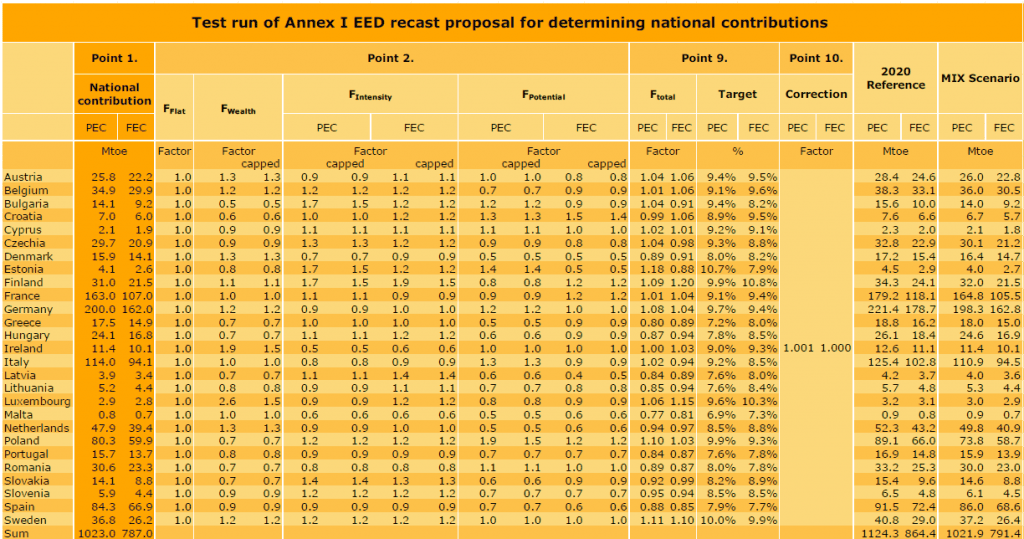The Fit for 55 package has the potential to deliver on the EU’s energy efficiency targets while the economic energy savings potentials for 2030 are increasing, according to a new study by Stefan Scheuer Consulting and Fraunhofer ISI.
The proposed recast of the Energy Efficiency Directive increases the EU target ambition, makes the EU level target binding, and introduces potentially powerful target governance tools.
It includes a formula to allocate the EU’s 2030 energy efficiency targets among Member States. A target allocation is new to energy efficiency but has been used with success for renewable energy and climate targets. But Member States would be allowed to deviate from the results of energy efficiency formula when determining national energy efficiency targets. The EED recast proposal includes a common correction factor, which could be used at the end to adjust national targets and ensure no gap is left to the EU target. But the Commission has not set out when and how it intends to use this tool.
The proposed EU 2030 energy efficiency-target levels of reducing energy demand by 9% compared to business as usual is an increase from the current 32.5% target to 36% for final energy demand and 39% for primary energy demand. Latest assessments show that economic energy savings potentials have been growing and if tapped would reduce final and primary energy demand by 17% and 18% respectively compared to business as usual.
The package includes important new elements which boost the delivery of energy efficiency targets. Carbon pricing for buildings and transport if coupled with requirements to use the new revenues, through the new Social Climate Fund to give vulnerable parts of society access to energy efficiency improvements in order to cut their energy bills.
The study includes the results of a test run of the new formula to allocate the target among Member States (see table).

The authors say:
Stefan SCHEUER: “This is a leap for the credibility of EU energy efficiency policy. The tools are put forward to secure a new and binding EU target. But they need to be placed in the right order, so that at the end of the target allocation the wrench is at hand to tighten the nut. Extended carbon pricing coupled with the Social Climate Fund can provide the tailwind for energy efficiency investments, further boosting confidence that this time around the EU is going to deliver on its targets.”
Matthias REUTER, Fraunhofer ISI: “Our assessment shows that economic energy saving potentials are growing, as efficient technologies become economic, and would get the EU two times further than proposed, reducing final and primary energy demand by 17% and 18% respectively compared to reference projections”.
Wolfgang EICHHAMMER, Matthias REUTER, Stefan SCHEUER: Will the Fit for 55 package deliver on energy efficiency targets? A high-level assessment, October 2021
